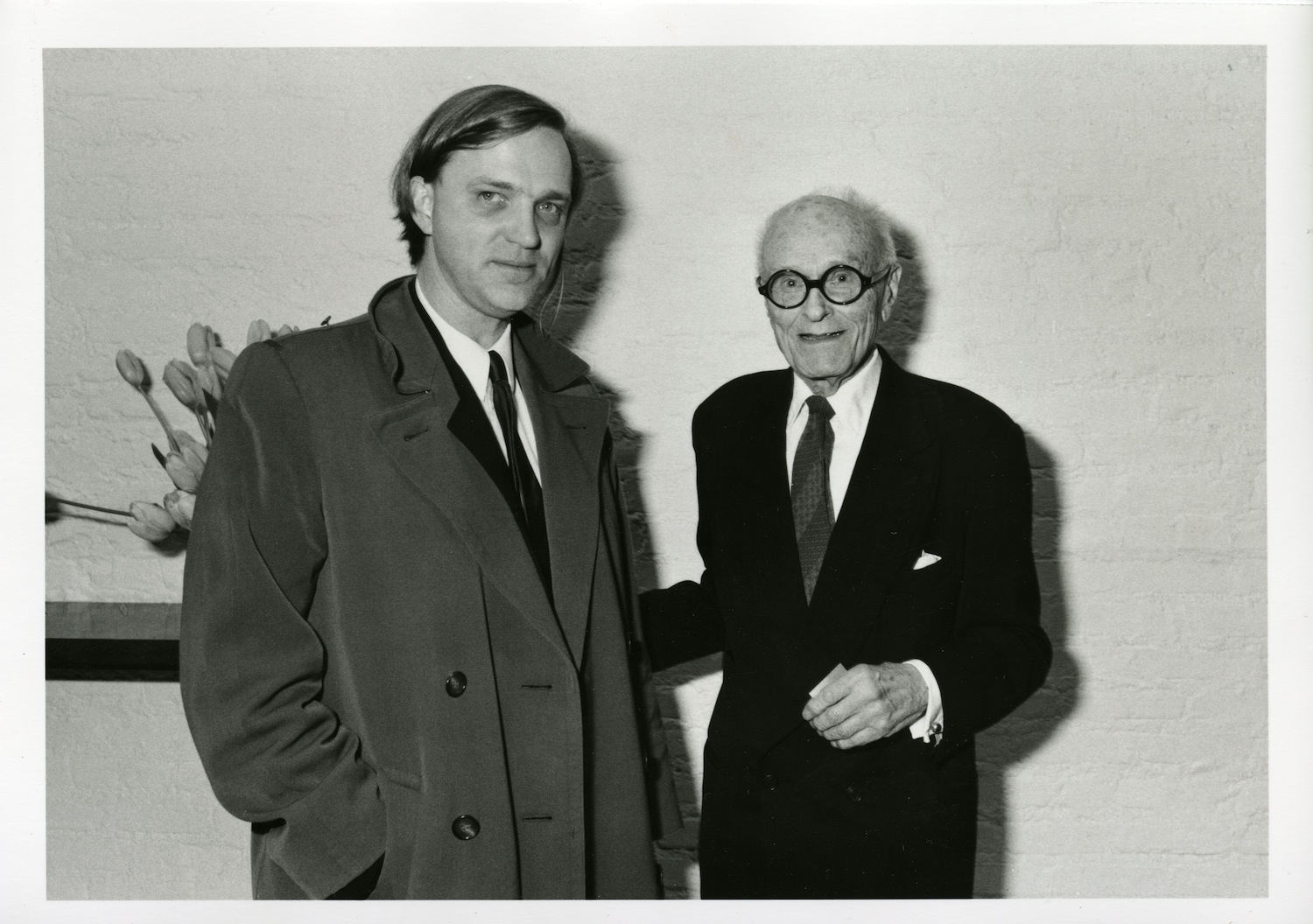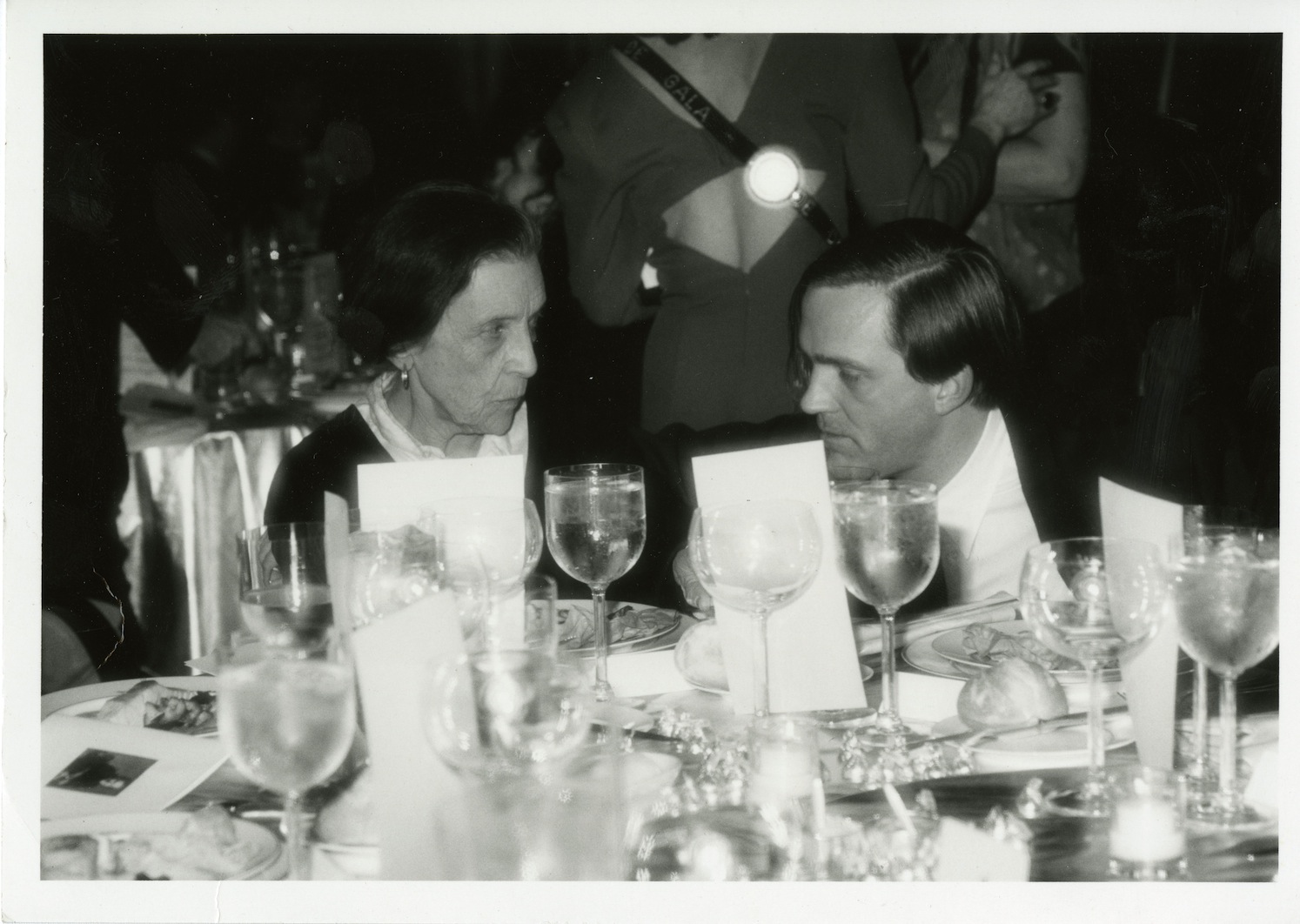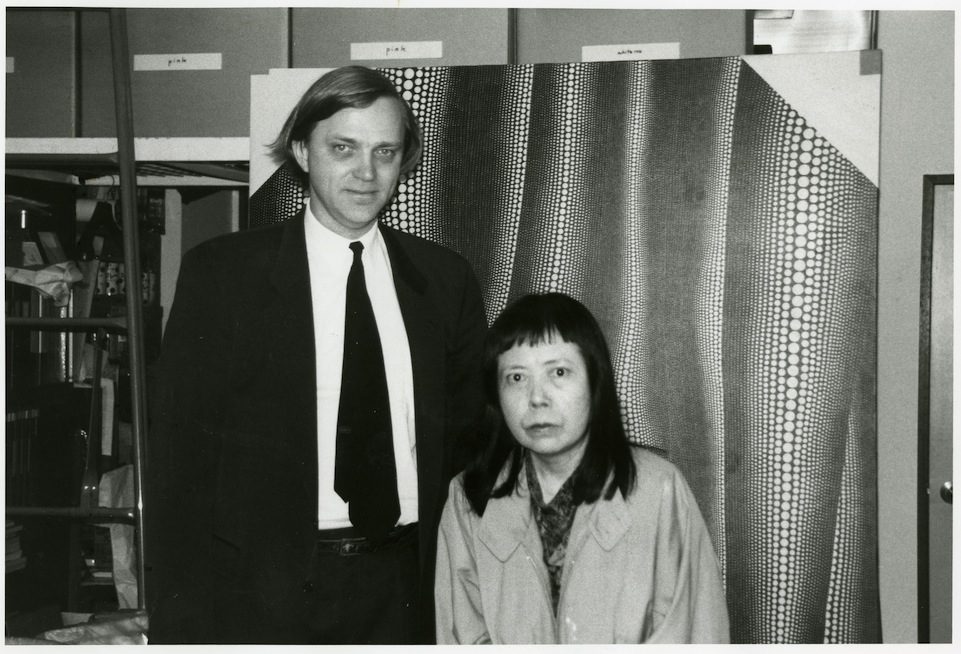
Photomontage by Katy Hamer, All photographs courtesy of Robert Storr, 2013
Top Left to Right: Robert Storr & Jasper Johns “Mapping” opening at MoMA 1992 /
Michael Brenson, Robert Storr, Adrian Piper, and Rosamund Morley at DISLOCATIONS opening, 1991 /
Harald Szeeman, Robert Storr, Bruce Nauman, Nauman retrospective at MoMA 1995
Bottom Left to Right: Robert Ryman & Robert Storr at Ryman retrospectrive at MoMA 1993 /
Meyer Schapiro & Robert Storr at the Studio School circa 1987 /
Leo Castelli and Lily Auchincloss w/ Robert Storr at DISLOCATIONS opening at MoMA 1991
A Dialogue with Robert Storr, by Katy Diamond Hamer
I recently sat down with Robert Storr, Curator and Dean of the Yale School of Art, to talk about his upcoming and long-awaited book on Louise Bourgeois, his own artistic practice and his feelings post the 52nd Biennale di Venezia, “Think with the Senses – Feel with the Mind. Art in the Present Tense”, his curated Biennale which was on view in 2007. Since having visited Venice in June for the recently closed 2013 Biennale titled, The Encyclopedic Palace, 2013 and also written on Louise Bourgeois by way of the documentary films by Brigitte Cornand, the timing seemed ideal to sit down and have a chat. Storr recently curated Lunch with Olympia a large group exhibit featuring artists who have taken a cue from Manet’s Olympia, on view at Yale University and helped organize an exhibition featuring the paintings and rarely seen comics of Ad Reinhardt at David Zwirner. He also had one of his paintings in the Phong Bui curated exhibition Surviving Sandy. We met at the Yale School of Art in New Haven and discussed all of the above, this dialogue is below.
KATY DIAMOND HAMER: The first time we met officially was through Paolo Canevari at Brice Marden’s exhibition at Pace Gallery in Chelsea and then again this summer at Guild Hall during your one on one talk with Chuck Close, this time through Lyle Ashton Harris.
ROBERT STORR: Yes, that’s right.
KDH: The first thing I wanted to discuss with you revolves around “Think with the Senses – Feel with the Mind. Art in the Present Tense”, the Venice Biennale you curated in 2007. After being present at the most recent Biennale (The Encyclopedic Palace), early in June for the press preview, I found myself thinking about your curated version. This year was my fifth Biennale and when I experience each one, it’s difficult not to compare one to the other.
RS: Exactly, this is actually true for all of us.
KDH: When revisiting Pensi con i Sensi – Senti con la Mente (translated as Think with the Senses – Feel with the Mind) I found myself thinking of painting and of course the African Pavilion, the introduction of the first ever pavilion dedicated to artists from Africa or of African descent, curated by Simon Njami.
RS: The painting part wasn’t necessarily significant but not because there was really so much of it, because previous and subsequent Biennials had so little. The painting was really stripped out of this kind of exhibition for a very large extent and that’s because the discourse of so-called Post-Modern Art, was highly hostile to painting in many cases. So I didn’t put more [painting] in than anybody else, in terms of proportion to the scale of the show, I just put more in than anybody had in a while.
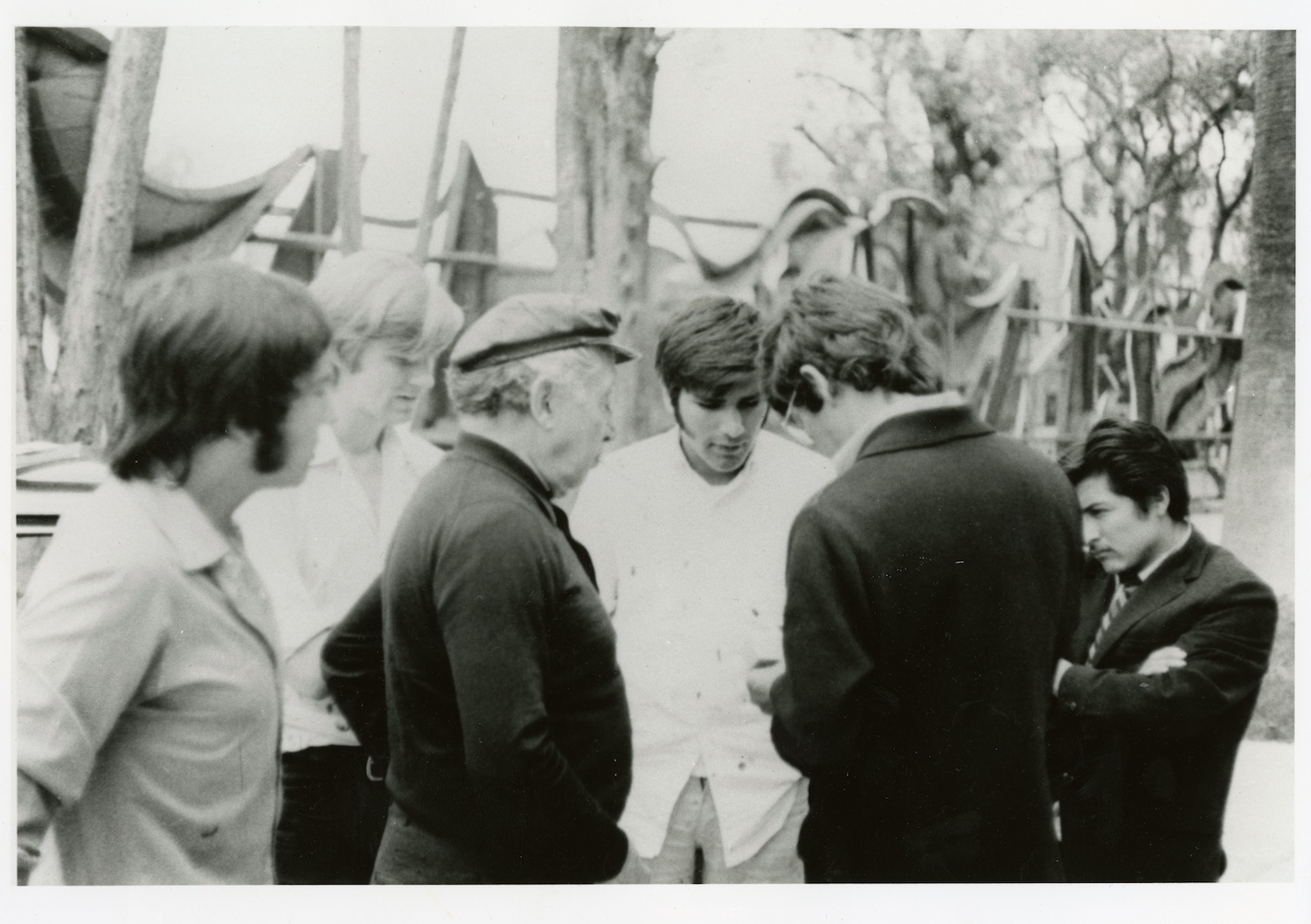
Robert Storr with Siquieros at the Polyforum in Mexico City, 1971
Photograph courtesy of Robert Storr, 2013
KDH: I still think about the room in the then Italian Pavilion filled with large-scale Sigmar Polke paintings. There were so many works that still resonate with me and then fast-fowarding to the Biennale of this summer curated by Massimiliano Gioni, the experience was very different. Various criticism has plagued both exhibits however, in my opinion, I’m finding yours more relevant to the contemporary mindset.
RS: I’m glad to hear it and I think I can tell you why. I think Massimiliano [Gioni] is a very smart guy, but I think he ducked something. He made a show that avoided dealing with an awful lot of contemporary concerns by turning it into an exhibition based on the idea of the solitary creator, and then putting that mode or model of the artist in the past tense. Outsider Art of the kind he showed, almost all of it was quite historical, and the idea of Art Brut and the outsider is also quite a historical idea. Perhaps younger generations haven’t seen that much of it, but anybody who is over forty and actually anybody who is over thirty, has seen a ton of it. I think he was playing, in some ways, to a very young audience unfamiliar with that material, by showing them historical examples. What I would hold against him is that he didn’t introduce us to any Outsider artists we don’t know, any representing the zeitgeist of extreme alienation today. Actually, [with his installation in the British Pavilion in the Giardini] Jeremy Deller successfully presented [the artwork of] some people who are in jail and making what you could call Outsider Art. It was particularly pertinent because they were veterans of recent Colonial wars. So I think he [Gioni] missed an opportunity within the domain he chose and basically finessed his show.
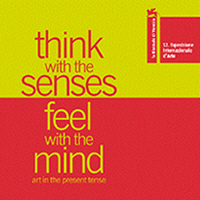
The title design of the 2007
Venice Biennale curated by
Robert Storr
KDH: That’s interesting because when I was there I actually felt and wrote about feeling a sense of emptiness and even lack. In a recent panel at the Cabinet Magazine headquarters in Brooklyn, I heard Massimiliano and others talk about the flattening of space in comparison to the pages of a book. But I do think what you just said in relating to a younger generation makes a lot of sense, specifically within that scale of exposure. The show does seems like it was geared towards a youthful (less experienced) audience, accomplished by almost by stripping some of them [the younger artists] out of the equation. There were a few big blockbuster artists who are up-and-coming, Ryan Trecartin for example.
RS: Well, that was the most major example I can think of. There is another audience who liked it a lot, I ran into AA Bronson who has been working for a long time on therapeutic issues and [could be considered a] mystic and he represents my generation. So he represents someone who really loves that good old Outsider, rather alienated stuff. I happen to as well, but I don’t need it in a Biennale.
KDH: Exactly, that is where I felt some confusion which I am still contemplating because I actually like having to negotiate being visually perplexed but also that I don’t have an answer. The one thing I’ve arrived at is that for me, that this recent Biennale is like a hypothesis. It raises a question that I’m not really sure about yet and I don’t know if he is either. At the panel, I heard Massimiliano speak about the Biennale and even as he spoke, there was no real definitive period at the end of the sentence and maybe that’s ok, allowing for something to feel temporary rather than make a conslusive point.
RS: I don’t think that’s the way he operates. I think he’s a notional curator, he gets a theme or a topic that isn’t something he’s necessarily thought long and hard about for a particular amount of time, and he runs with it. He has a good eye and he does know a lot, so once he gets to work he can gather good material. But I don’t think he’s the kind of curator who is going to change anybody’s mind about anything, nor have a fresh take on anything we already know. What he’ll do is he’ll package very effectively something that’s ___ in the wind. It’s what he’s done at the New Museum and that’s what he does at [Fondazione Nicola] Trussardi, and so on. I would give him credit for that because Francesco Bonami can’t package anything to save his fucking life.
KDH: [Chuckling]
RS: [Continuing] He’s a promoter [Bonami] but he’s not somebody who can actually put together a show. His Biennale was a disaster and most of his shows are disasters. His “Italics” show in Chicago was embarrassing [“Italics: Italian art between Tradition and Revolution, 1968-2008”—running 22 March, and from 11 July to 25 October at the Museum of Contemporary Art (MCA), Chicago] but he’s a networker and a power player. By comparison I give Massimiliano pretty high marks for craftsmanship.
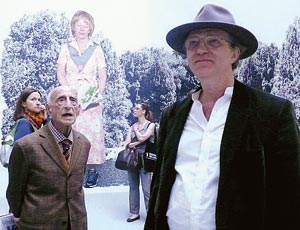
Gillo Dorfles and Robert Storr,
The Italian Pavilion, Venice, 2007
Photograph courtesy of Corriere della Sera
KDH: Pensi con i Sensi, Senti con la Mente was distinct and I”m still contemplating the conversation that was created between painting and sculpture within a particular, designated environment.
RS: I”ll tell you a little secret about Massimiliano’s show and what didn’t happen that should have happened. It doesn’t involve a comparison between Biennale’s it actually involves a comparison between points of view within a generation. Which if relational aesthetics has been a dominant conversation in the last several years, then reversion to the idea of the true artist as this compulsive loner is a really big shift. It’s actually a backlash and I’m surprised that nobody notices it. Asking Massimiliano questions during the interview we did together through ArtPress, when we got onto [the topic of] politics he was very dismissive. I remember also having that conversation with him in Mexico when we first met to the same reaction. He openly states that he is not interested in politics and he is disdainful of those of us who are and that is a difference of opinion we are not going to overcome. Within his generation, the bigger concept is the idea that the artist is a social being or whether the artist is a solitary being. I happen to think they are both. But his was a very extreme statement on the other side. As for my Biennale, there was scant substance to the criticism other than ad hominen invective. I was typecast at “the MoMA man,” even though I had walked away from MoMA, and quit a job that everyone was killing to get. I walked away from that position, and had not been at MoMA for five years when Venice opened. And despite the job I’ve had I was never the “establishment” figure people were trying to say I was. But then the thing that really bugged the shit out of them was that I did a show that others had been talking about doing but that no one had actually done. It was very international, it was political and it did offer critique of the genre. Plus it included lots of artists who had been ignored or excluded. But what ultimately bothered them most was that it brought together of images and issues and media that people had a big stake in keeping separated and antithetical. I also did a show called “Devil on the Stairs” in Philadelphia, the point being to say that a lot of these false dichotomies that were a product of early Post-Modern theory simply don’t hold and if you juxtapose works by people from different camps, it is plain as day. In doing that we can then talk about what it is that ties the works, the artists and the various genre’s together and how the differences are points of interest, not who wins the argument. However, it was not a widely seen or popular show.
KDH: That makes sense. One of the other things I wanted to talk about in your show was the darkness that was underlying and running throughout in the Arsenale and Italian Pavilion.
RS: My show? Yes, I have a pretty dark view of the world.
KDH: I’ve been thinking about the darkness as well, not only aesthetically but the opportunity given to the viewer to consider his or her own mortality. I was thinking about it retrospectively.
RS: Well, there was an entire section about dying. Actually two sections. one in the Arsenale that was about people’s attitudes towards death and there was one in the Italian Pavilion featuring artists who died before the show. That was very deliberate. I wanted to make a show that was entirely contemporary and did not have famous dead artists, who were father figures or mother figures looking down at us from the heavens. I wanted to have a show demonstrating that we are all going to die and that some of us die way too soon. Which is a very different deal and partly out of my own experience. You know, I remember the AIDS days very well. I lost a lot of friends. and this is something [that as a topic] has been plowed under a bit. The fact is, I have an existentialist view of life because it ain’t gonna be long and it ain’t gonna be pretty necessarily and people should not forget that and they should respect artists who can articulate this idea well.
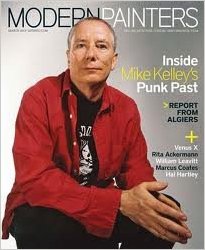
May 2012 issue of Modern Painters
featuring Mike Kelley on the cover.
KDH: Which is true and also brings us to today, after having recently visited Jason Rhoades exhibition at the ICA Philadelphia and Mike Kelley at MoMA PS1, where in both shows and with rather both artists, there is a real sadness that is transported through their work.
RS: There was a photograph of Mike taken right before he committed suicide on the cover of Modern Painters, and if you look into his eyes he looks like the man of sorrows. I went to the memorial service and I remember John Waters was presenting a speech and he said, “We’re all here to mourn Mike but don’t feel like you could have done anything or did anything wrong This is a man who wanted out of here and was going to make sure he got out of here.” I saw Mike a year and a half or two years before he killed himself and you could feel it even then, he was in terrible pain. But I also talked to someone at his gallery after he died and they basically said ‘good career move’.
KDH: That gives me chills.
RS: And that is what broke his heart. He was playing for keeps and as he moved up in the world, I think he found out how cold it really was and he wasn’t a particularly warm and fuzzy guy to start out with.
KDH: I recently read a really good article in the Wall Street Journal (Exploring Formative Moments by Kelly Crow, October 2013), talking about his [Kelley’s] childhood, where he came from and where he ended up. There are many young artists today who are moving rather quickly through the commercial gallery scene and are somehow almost being stripped of their humanity in the process. Going back to the AIDS crisis I read in another recent article that 1 in 10 men in their early 20s will be HIV positive. I love that artists like Lyle [Ashton Harris] are bringing these subjects back into the forefront after the conversation has faded into the background over the last ten or fifteen years.
RS: This generation is flirting with soul-death and doesn’t quite yet know because young people think they are immortal. However, I think there are other than physical ways that we are mortal. They will find it terribly isolating if they win and realize how terribly isolating it can be when they lose. Building communities, not networking, but truly building communities is something a lot of people in the art world do for a very good reason. Survival really is the issue, survival as complete beings.
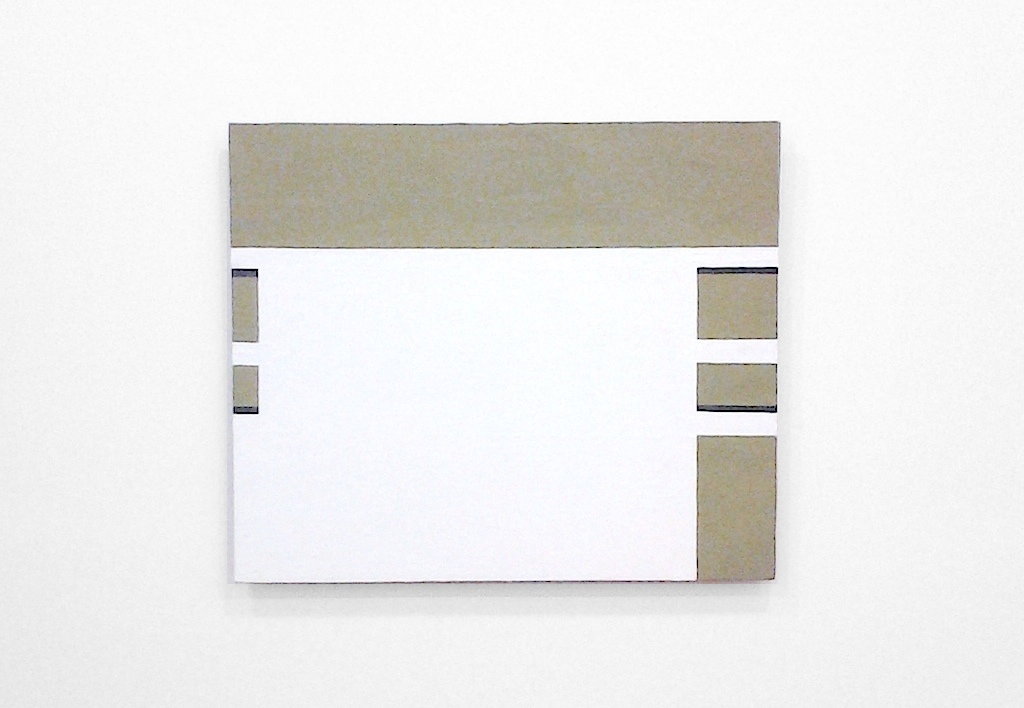
Robert Storr, Suzy Fishing, 2002-2012, Flashe on canvas, Image courtesy of the artist
Installation view from Coming Together: Surviving Sandy, Organized by Phong Bui, 2013
KDH: I’d love to merge this part of the conversation into your own art making practice. Let’s talk a little about your own art career and how it plays into your writing and curating.
RS: It [art career/practice] plays a lot into it [writing and curatorial practice] because I did it to utilize all the various opportunities and also to eventually get it all behind me. It took longer to do that but what I’m doing now is phasing myself out of that world and phasing myself back into the studio.
KDH: Oh really?
RS: I’ve always made work in the studio, even if just a little bit. There’s a show that Phong Bui of the Brooklyn Rail did for victims who survived Hurricane Sandy (Coming Together: Surviving Sandy, October 20th -December 15th, 2013) and they had one of my paintings, titled Suzy Fishing, 2002-2012, and I also recently gave a work to an auction. I’ve never stopped being part of that world, but I also haven’t had a gallery because it would have been a conflict of interest. Unfortunately, I haven’t had the time to spend making the work I’d like to be doing.
KDH: It’s exciting to think you will be making this change.
RS: It’s exciting and it’s scary but I’m very sure that it’s what I should be doing. I have some pretty important works on loan and when I see them in certain collections and they look good they don’t look wannabe they look in the space and context. A friend of mine has a private collection of Brice Marden, Franz Kline, Ellsworth Kelly and Robert Ryman including a print of mine in the same room and it looks pretty good.
KDH: Having had hands that make artwork there is something to say about the way that one looks at the artwork of others within a cubed space, so to speak. As a viewer it’s possible to interact with that work especially knowing a little bit more about the process and how it came into fruition. We spoke a little earlier on isolation and it is in isolation where most of this work is born.
RS: It also means you behave differently as a critic if you stick really close to what you know. Jerry Saltz used to be an artist and one of the reasons he’s so screwed up is that he made a decision to not be an artist and has never known how to live with it.Playing both ends against the middle for maximum “fame,” he wants to be the know-it-all “conscience of the art world” and class clown at the same time. Plus a booster for the gallery system and an unsolicited career coach for artists. It simply can’t be done. Or not for long, and I am far from the only one to think that his act has gone stale, if not to say rancid. Peter Schjeldahl made the same mistake with poetry, which he gave up but which had previously fed his spirit and style. Meanwhile Dave Hickey is a “good ole boy” Outlaw PhD in English literature who gave up writing country songs, gave up writing short stories, and gave up running a small gallery, phoned in one Site Santa Fe biennial and now rails against “academics” and “cultural bureaucrats” and wants to tell us how rotten the art world has become and what fools we all are – while cashing his university check as a distinguished professor of Art History in New Mexico. I never made the decision to renounce art no matter how little attention my own work has gotten or deserves and I don’t begrudge other people and whatever good things happen to them. So when I go to work I don’t need to walk around with that resentment.

Robert Storr with Louise Bourgeois installing DISLOCATIONS at MoMA 1992
Photograph courtesy of Robert Storr, 2013
KDH: We touched upon your upcoming book on artist Louise Bourgeois (December 1911-May 2010) while at Guild Hall in East Hampton this past summer and I wonder if you can talk a little bit about that. At that time, I had mentioned that I recently wrote a review on the films of Brigitte Cornand whose work was on view at The French Institute Alliance Française in New York this past spring.
RS: Yes, Brigitte is a friend. I met Louise when I was an absolutely broke, an art handler picking up a print of hers to put in a benefit auction. I am bilingual, having gone to school in France and I had known her work so I was fortunate to open the door in this way and was looking forward to meeting her. We hit it off almost immediately. For thirty years I was in and out of her life, sometimes being very deeply in it along with my whole family. My daughter portrayed the artist in a film at six years old while Louise portrayed herself. The book has taken a long time for a variety of reasons, one being that the relationship was so complicated. She did not want me to finish the book because she didn’t want to lose contact with me. She also was mad at me for having taken the job at MoMA so she played games of cat and mouse, withholding information that I needed. Some people would say that it [the book] was never going to happen but I am in fact in the last stages of finishing it now. The model for it is the book that Lucy Lippard wrote on Eva Hesse and I think Lucy’s book is really an exemplary text on contemporary art by a participant observer and that is what I’m trying to do.
KDH: By watching Brigitte’s films, and there are many, it’s possible to get a real sense of Louise’s personality and her relationship with control.
RS: Brigitte had one of the most extraordinary relationships with Louise than anybody else. Louise really trusted her and really liked her and was enormously important to her.
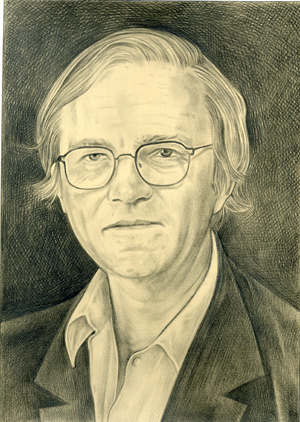
Robert Storr
Graphite portrait
by Phong Bui, 2007
KDH: I got a sense of that through the documentaries.
RS: She saved Louise’s life in a lot of ways. Because towards the end of the 90s beginning of the 2000’s Louise was in pretty sorry shape and was not taking care of herself and Brigitte stepped in and embodied a stern maternal figure the kind that the French know how to do. Louise was actually more religious than people know having been raised Catholic and they (she and Cornand) had cultural, linguistic heritage in common that others didn’t share. Jerry Gorovoy was Louise’s assistant for thirty years but doesn’t speak French or necessarily understand French culture. I think Brigitte was able to fulfill an enormous gap there. By the end of her life I no longer had the time to spend with her that she would’ve liked, in fact needed.
KDH: Watching the films (dated from 1995 until 2009, a year before the artist’s death in 2010, just released in 2012) I was very moved. I’ve always liked Bourgeois’ work and remember seeing it, specifically Maman, 1999 on view at the Tate Modern in 2000. The way that she was able to make artwork that was incredibly emotionally raw evident also with a physical pain that is transported through the empty space of observation.
RS: See, that’s what I like, physical pain, articulated by intelligent, clear-sighted people such as Louise Bourgeois, Eva Hesse, Felix Gonzales-Torres, Gerhardt Richter and so on. That is where I connect.
KDH: Through the content of your book, titled “Intimate Geometries; Art and Life of Louise Bourgeois”, published by Monacelli Press with a publication date set for Fall 2014, will we get a taste of your point of view looking into the situation, her life as portrayed in the films by Brigitte Cornand?
RS: I hope so.
KDH: Will there be any documentation of your relationship with the artist?
RS: There will be a section dedicated to our personal relationship in one of the final chapters and other personal details will be woven throughout. I could write a memoir about her someday, maybe I will, but this is a book about her art. A lot of the writing about Louise has applied Freud [to her art] arriving at something Joyce Carol Oates called psychopathology or pathography. Louise was an extremely smart, well-educated, although not a formally educated person, she needs to get the credit for being a brilliant artist on multiple levels rather than just a force of nature acting out or another case study in the literature of psychoanalytical aesthetics. She made decisions, knew references and stole like a bandit. There are a lot of sources in her work that emerged from trips to Africa with her husband, (Robert Goldwater, an African art scholar) and she was able to do something with it that wasn’t along the lines of the Primitivism game of the early Cubists. It was more about a series of exotic decisions based on her own need to make certain historical references.
One of the things I like about Lyle’s work, among many things, is that there is a lot of pain and he knows how to put it out there.
KDH: One of the reasons I’m interested in art and the art world, the act of looking specifically is because of that reason alone. The pain, it is this grandiose human notation not only of time but of presence.
RS: One of the reasons I’m interested in Jeff Koons is that Jeff is in denial of pain and death but his denial is very eloquent. In comparison to Damien Hirst who has nothing to say. Lastly, never give up on art, and it will never give up on you.
…………………………………………………
More soon.
xo

